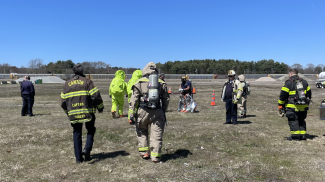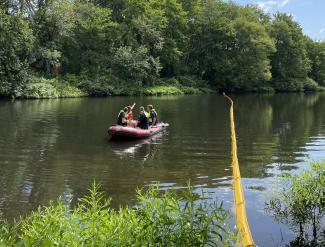Training & Drills
LIVE AMMONIA RELEASE TRAINING
In 2024, our office along with local fire departments and other emergency responders had the opportunity to train with live ammonia. TRANSCAER in partnership with Tanner Industries, Inc. supplied us with classroom and field training. During the classroom session we learned about the chemical and physical properties, placards, labels, containers, tank construction, and the hazards and potential outcomes associated with an anhydrous ammonia incident. In the field portion of our training Tanner Industries, Inc. supplied an ammonia trailer and the participants performed basic control and confinement operations, such as tarping and covering. All participants were required to dress in full level A ensembles if they were participating in the field session (see photo below).

GEOGRAPHIC RESPONSE STRATEGY TESTING
In June, our office along with the local fire departments and the EPA tested the states geographic response strategies. Geographic Response Strategies (GRS) are map based planning guides intended to be used as a tool for first responders. The GRS help local responders to effectively deploy containment and recovery equipment in the event of a spill to navigable waterways.

